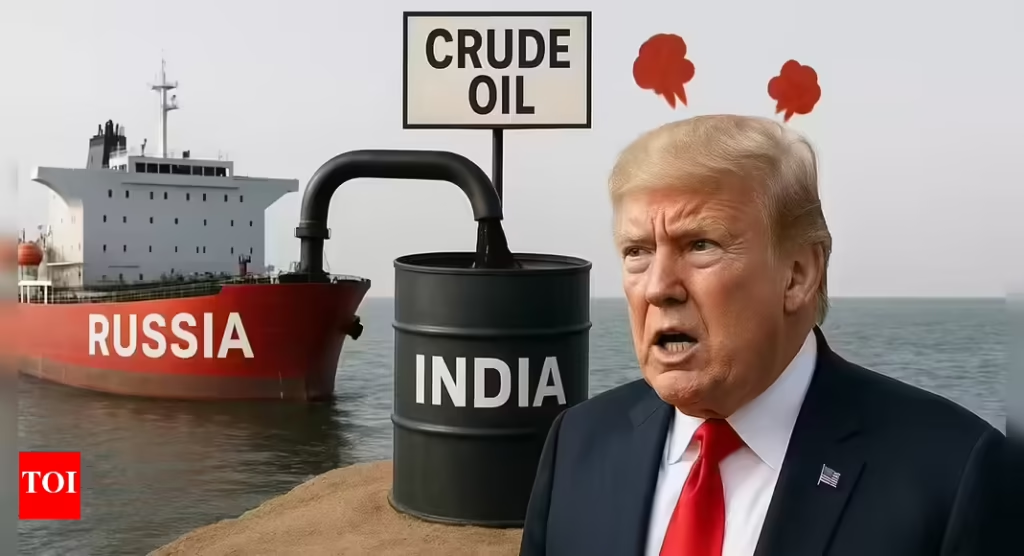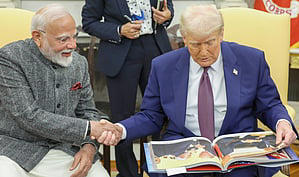
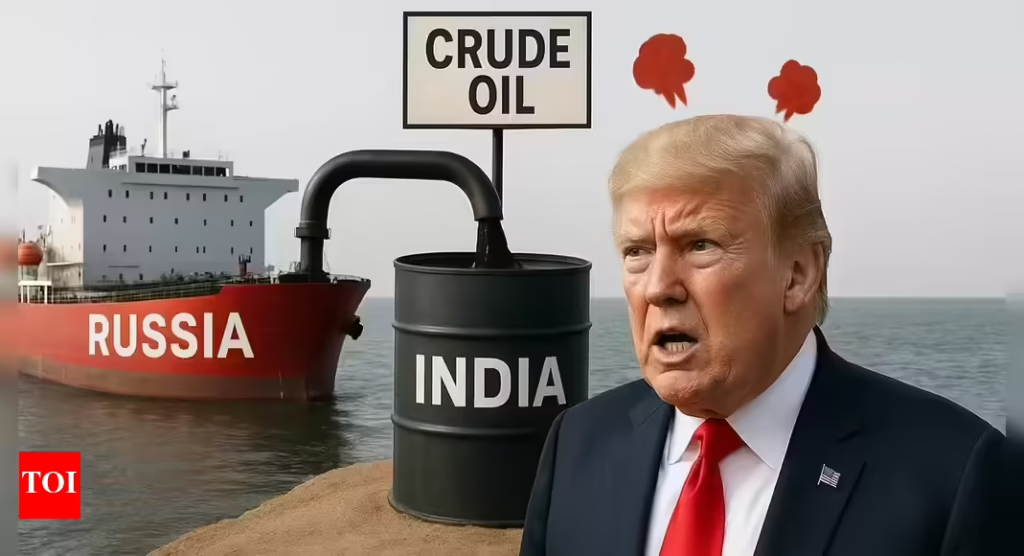
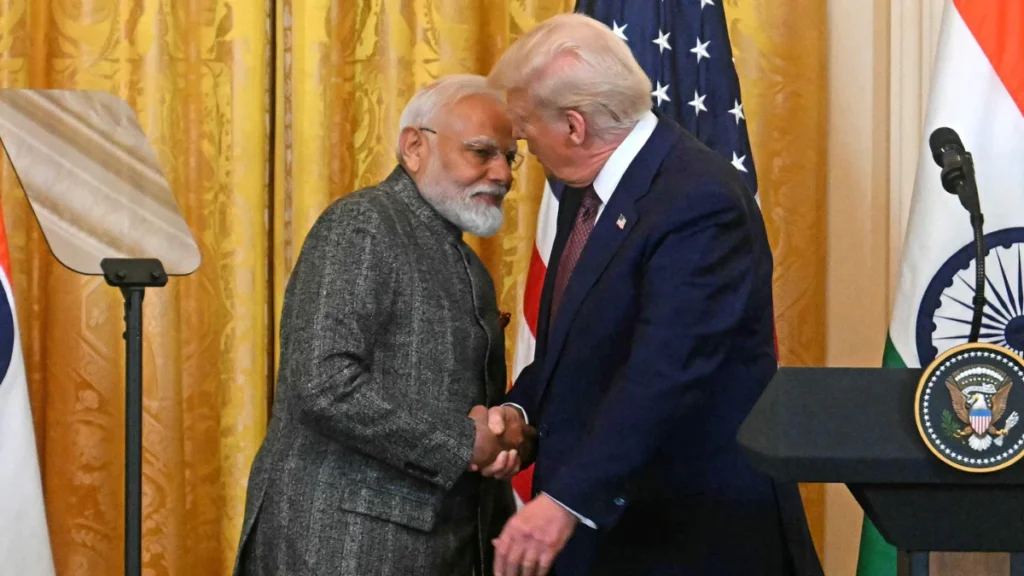
Introduction
In a major diplomatic and economic development, India and the United States are reportedly close to finalizing a strategic trade agreement that could reshape their bilateral relationship. According to multiple media reports, India has agreed to gradually reduce its imports of Russian oil and open parts of its agriculture market to American products. In return, President Donald Trump’s administration is considering reducing tariffs on Indian exports to around 15%, down from nearly 50%.
This marks one of the most significant Indo-US trade breakthroughs in years — linking energy, trade, and agriculture under one comprehensive framework.
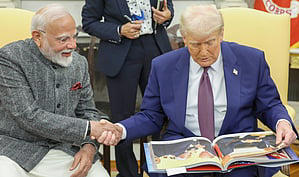
The Reported Deal: Key Highlights
- India will cut back on Russian crude oil purchases over the next several quarters.
- India may permit limited imports of American agricultural products, particularly corn and soymeal, in a phased manner.
- The Trump administration could slash tariffs on Indian goods — especially textiles, engineering products, and pharmaceuticals — to nearly 15%–16%.
- Negotiations are reportedly in their final stages, with an announcement expected soon.
While neither New Delhi nor Washington has officially confirmed the agreement, officials on both sides have hinted that the talks are “progressing positively.”
Why This Deal Matters
The proposed trade deal carries deep strategic and economic significance:
1. Energy Realignment
India has become one of the world’s largest buyers of discounted Russian oil since 2022, when Western sanctions hit Moscow following the Ukraine war. Currently, Russian crude accounts for around 30–35% of India’s oil imports.
Reducing this dependency aligns India closer with the US and Western energy policy, but it also means India must find new, possibly more expensive, sources of oil.
For Washington, India’s move would represent a major diplomatic win — showing that one of the world’s biggest energy consumers is reducing reliance on Russian supplies.
2. Agricultural Market Access
The US has long pushed for greater access to India’s vast agricultural market, especially for non-genetically modified soymeal and corn.
India’s agreement to open certain sectors could be a game-changer for American farmers, who have struggled to compete in India’s highly protected agri-market.
At the same time, Indian dairy and poultry industries might benefit from cheaper feed imports, while local farmers may fear increased competition.
3. Tariff Reductions: A Boost for Indian Exporters
Trump’s reported plan to cut tariffs to 15% could open massive opportunities for Indian exporters — particularly in sectors such as:
- Textiles and garments
- Pharmaceuticals
- Engineering goods
- IT hardware and electronics
With reduced tariffs, India’s export competitiveness in the US market could increase dramatically, potentially adding billions to annual trade flows.
India’s Strategic Balancing Act
This agreement underscores India’s effort to maintain its strategic autonomy while navigating complex global politics.
On one hand, India continues strong defense and energy ties with Russia; on the other, it seeks to strengthen its economic partnership with the US — a key counterweight to China in the Indo-Pacific region.
New Delhi’s message is clear: India is willing to adjust energy policy if it brings long-term trade and diplomatic benefits.
Trump’s Perspective: Economic Leverage Through Trade
For President Trump, who has consistently linked trade and geopolitics, the reported deal would achieve two objectives:
- Pressure Russia economically by reducing its oil exports to India.
- Reward India for aligning with American interests by lowering tariffs and deepening trade ties.
During a campaign rally earlier this year, Trump said:
“India is a great partner. We want fair trade, not one-sided trade. If India stops buying Russian oil and opens its markets, we will reduce tariffs significantly.”
His administration views this as a win-win: strengthening US exports while bringing India closer into the American economic sphere.
Economic and Political Reactions
Reactions across global markets and policy circles have been mixed.
Indian exporters have welcomed the possibility of lower US tariffs, calling it a “historic opportunity.”
Energy analysts, however, warn that reducing Russian oil imports too quickly could push up domestic fuel prices and strain India’s refining margins.
Meanwhile, farmer unions in India have voiced concern about the possible influx of US agricultural goods, saying it could “undermine local producers.”
On the American side, agribusiness groups such as the US Soybean Export Council have lauded the move, calling it “a breakthrough for fair trade and food security.”
Geopolitical Implications
The implications of this deal extend beyond economics.
- It strengthens the Indo-US alliance at a time when global power centers are shifting.
- It signals India’s gradual distancing from Russian energy dependency.
- It reinforces the idea that trade can be used as strategic leverage in international diplomacy.
If successfully executed, this deal could reshape how future trade and energy negotiations are conducted — linking economic incentives with geopolitical alignment.
Challenges Ahead
Despite optimism, several challenges remain:
- Implementation timelines for oil import cuts are unclear.
- Domestic resistance in India’s agriculture sector may delay full liberalization.
- Global oil market volatility could complicate India’s shift away from Russian crude.
- Political changes in Washington or New Delhi could alter the deal’s trajectory.
Experts warn that the success of the agreement will depend on careful policy calibration — ensuring that economic benefits don’t come at the cost of energy security or domestic stability
Conclusion
The reported India-US trade pact could mark a turning point in global trade diplomacy. By agreeing to cut Russian oil imports and open agricultural markets, India is signaling its willingness to align more closely with US strategic priorities — in exchange for tangible economic gains such as reduced tariffs and expanded market access.
If the agreement is finalized, both nations stand to benefit:
- India could see an export surge and stronger Western partnerships.
- The US could secure new agricultural markets and weaken Russia’s energy reach.
However, the road ahead remains complex. The world will be watching how Prime Minister Narendra Modi and President Donald Trump navigate this delicate mix of trade, energy, and diplomacy — where every barrel of oil and every percentage point of tariff carries global significance.
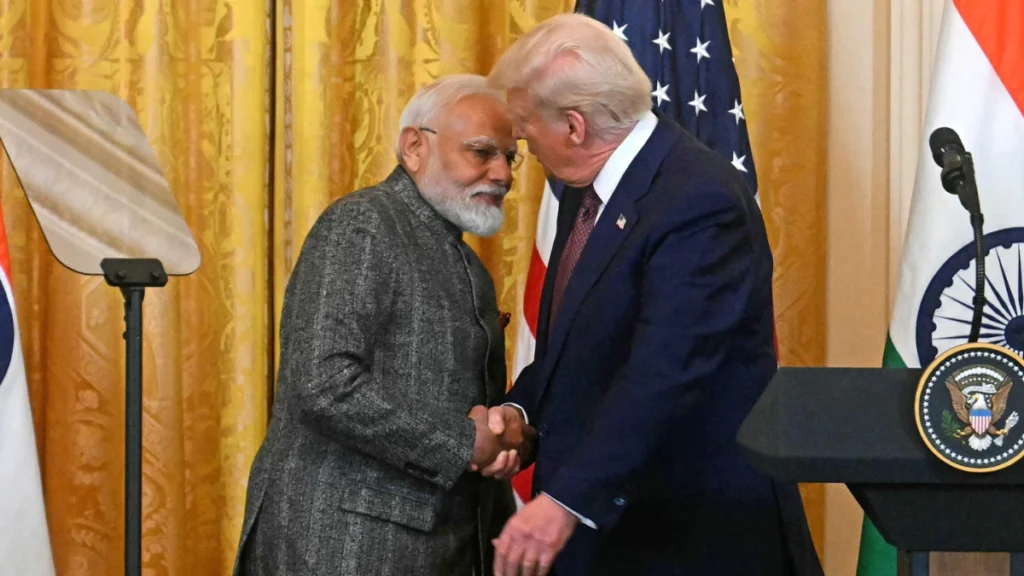
by chandan sharma 22-10-2025

